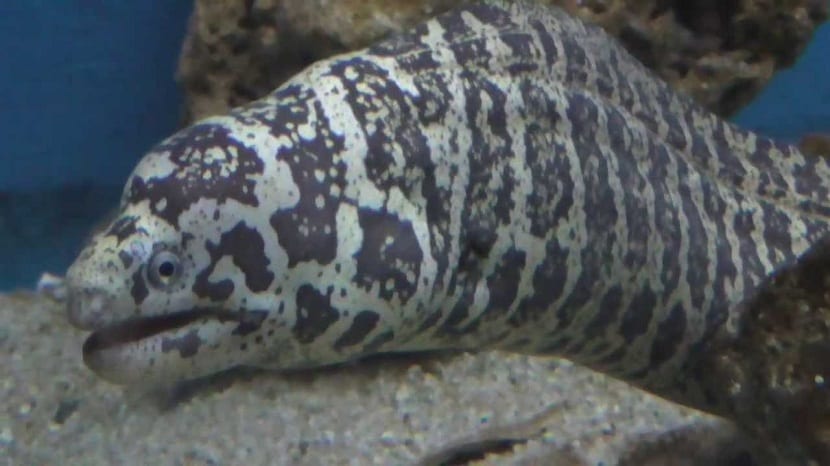
In our seas and oceans there is a large amount de peces with various strange shapes and all kinds of sizes. An example of this is the sunfish. Having almost no resemblance to other fish, it doesn't even look like it was a fish. Today we are going to analyze in depth a fish that is known as eels and is classified as fish. They are not snakes per se, but they look like one. Its about moray fish.
Do you want to discover all the secrets that this curious species hides? Keep reading to know more.
Key features
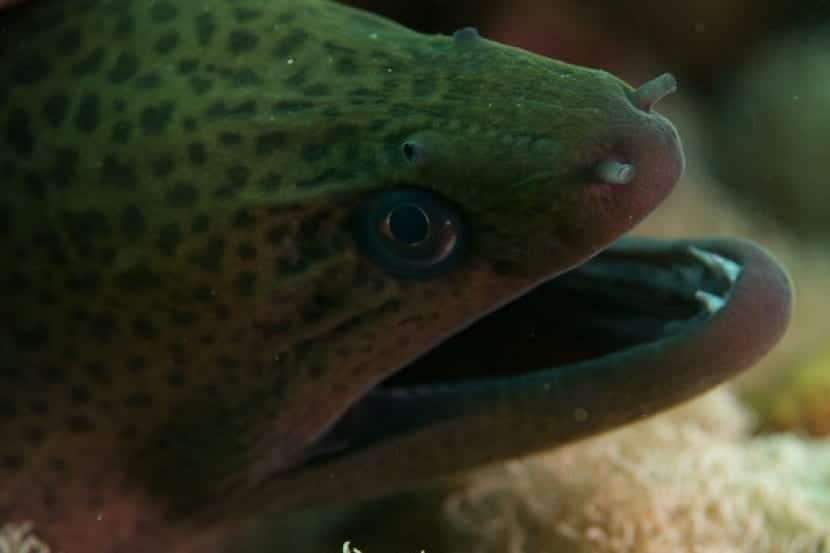
The moray fish is large and it belongs to the family Muraenidae. We have said that it is known as eels since they belong to the order of the Anguilliformes. The main characteristics that all the specimens of this order have is that they do not have pectoral and ventral fins. In addition, they have a smooth skin without any type of scales. This genus is quite common in the Mediterranean and is abundantly represented in the tropical and subtropical seas.
The moray eel has a fairly elongated eel-like body and can reach up to 1,5 meters in length. Its weight is usually around 15 kg, although in most specimens it is usually somewhat higher. The coloration varies from dark gray to dark brown with some fine dark spots. Its skin is gangous and does not have scales, as we have mentioned previously.
The dorsal fin begins behind its head and continues to the caudal fin fused with the anal fin. They do not have pectoral fins and their teeth are quite long and pointed. The mouth is long and robust and reaches behind the gills.
Range and habitat
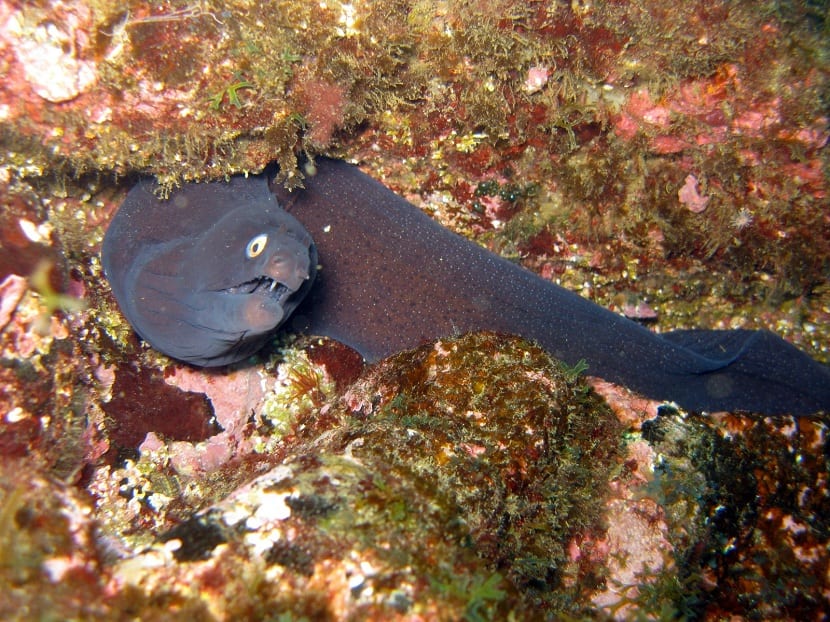
The moray eel is found throughout the Mediterranean Sea. It is represented by its appearance in tropical and subtropical waters ranging from the eastern part of the ocean Atlantic from Senegal to the British Isles.
As for the natural habitat, they tend to prefer the rockier areas of the sea such as coral reefs where they can find perfect places to stalk their prey in holes and crevices.
The moray eel of the Mediterranean Sea leads its life in a solitary way. They usually guard the territory of origin and have nocturnal activity. The reproduction of this fish is not well known, so we will not be able to discuss it in the post. The only thing that is known is that a large number of eggs are generated during spawning. Without going any further close to 60.000 eggs. Being so many, they are prone to parasites such as the trematode Folliculovarium mediterraneum and the flatworm Lecithochirium grandiporum.
Food
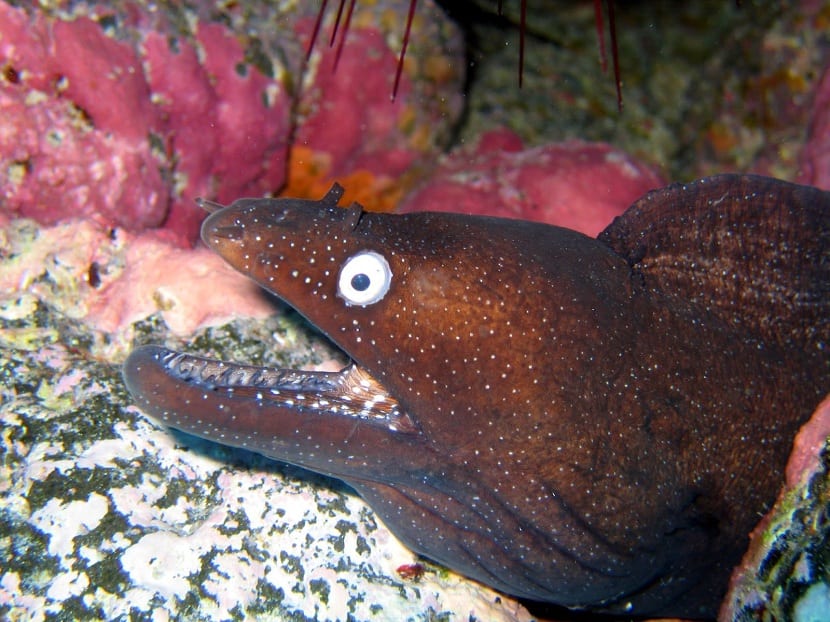
This species is carnivorous and scavenger. During its active time it is hunting other fish and cephalopods. On some occasions it can be found hunting other moray fish. Their eyesight is not very good and, therefore, they base their hunting mainly on their smell. In this way they manage to track their prey.
It is a scavenger when it cannot find another type of food. This animal is situated as a predator in the highest part of the food chain. It is capable of eating other animals much larger than itself.
What makes the moray eel high on the food chain is that it is a large, vigorous predator. Your jaw has a highly developed system consisting of a second jaw that opens when the first is already open.
To feed, it grabs the prey with the first jaw and pulls out, fitting down the prey. These jaw adaptations make the moray eel a great biting machine. Most fish rely on opening their large jaws quickly causing the negative pressure of the water to suck prey into their mouths.
This is the ability of the eel to swallow fish and large creatures whole.
Brown fish in captivity
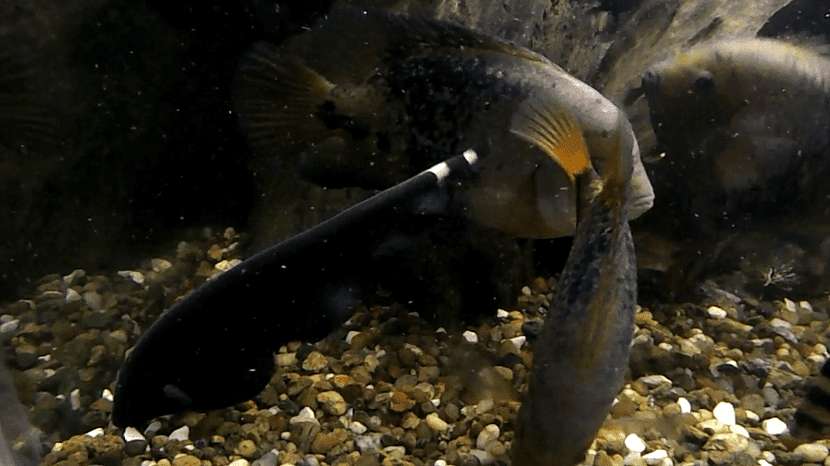
From what can be guessed, it is quite difficult to have a fish with these characteristics in aquariums. However, it is not impossible. It is necessary to follow certain recommendations for the fish to lead a fairly healthy and calm life. This species is only recommended for all those people who already have advanced experience in the world of aquariums.
It is prone to skin diseases. As they do not have scales, they are extremely sensitive to a number of medications and, when transported from their natural habitat, it can bring multiple parasites with it. To avoid this it is better to quarantine them. Parasitism is alleviated with a good UV sterilizer in the tank. Not only will it help to avoid many diseases, but it will also give more stability to the aquarium.
Regarding its behavior, it is a fairly calm fish that does not usually bother the rest of the aquarium companions. But nevertheless, black moray fish can become aggressive with members of their own species and others that are similar. Other than that, they are generally quite shy. You have to be careful about housing other species de peces too small compared to them, since with the large mouth it has it can swallow and swallow them without any problem.
Observe how it behaves with other fish, you can have it without any problems with fish that have its size.
Management
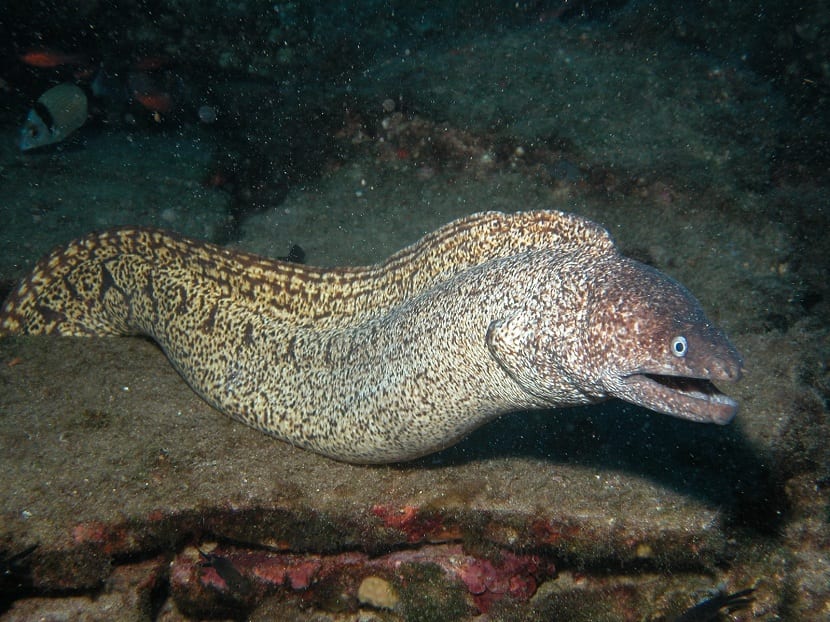
Diseases attack these fish, although they do not usually give much trouble if the aquarium is well cared for and well maintained. The river moray fish is even more prone to diseases than the sea fish. If we notice some symptoms of illness, We must quarantine it and isolate the tank. They will float to the surface of the aquarium to soothe your skin.
They generally respond well to many medications and heal quickly. You should never use copper in a river moray tank or it could get infected.
When multiple fish are kept it is common for all fish to be infected even before the first warning signs can be seen, the best way to prevent disease is to give the fish a suitable environment and provide a well balanced diet.
I hope that with these tips you can enjoy your brown fish in the aquarium.